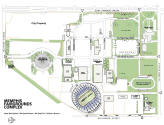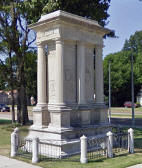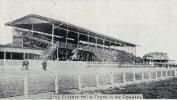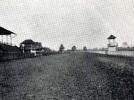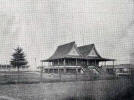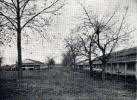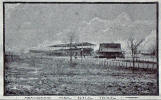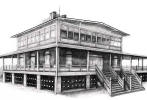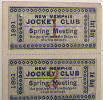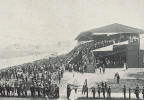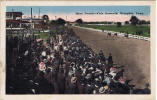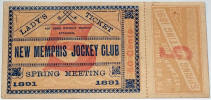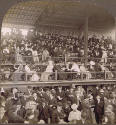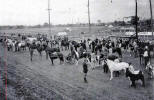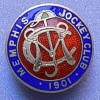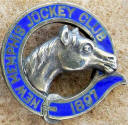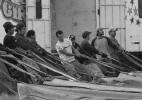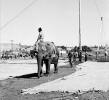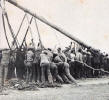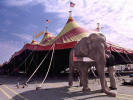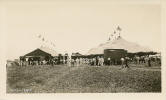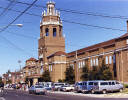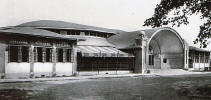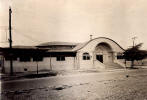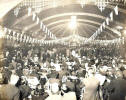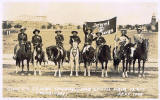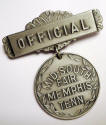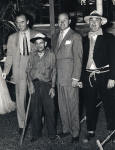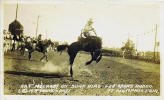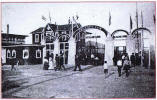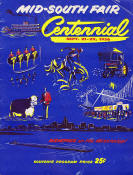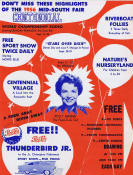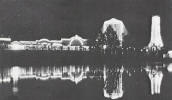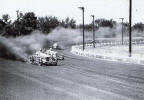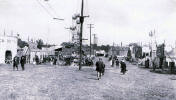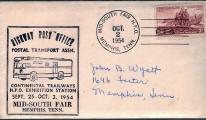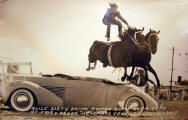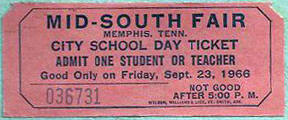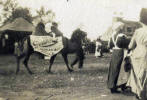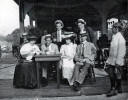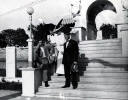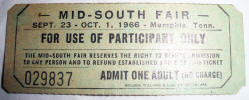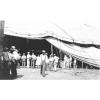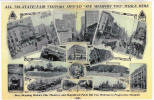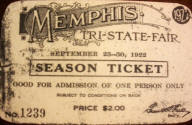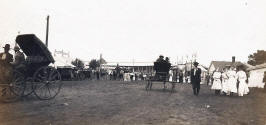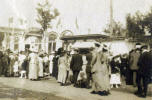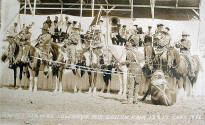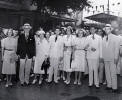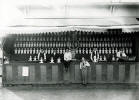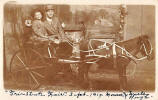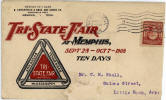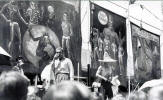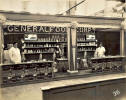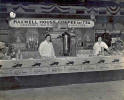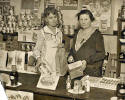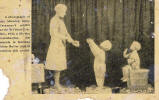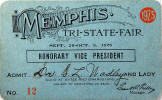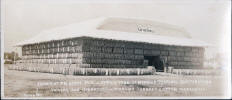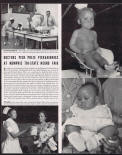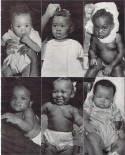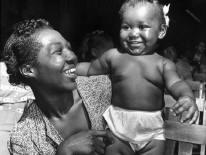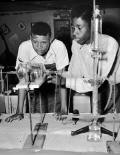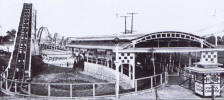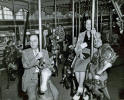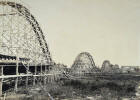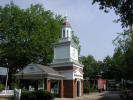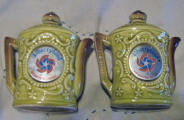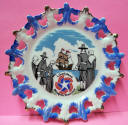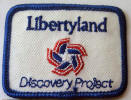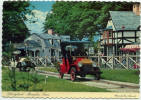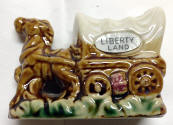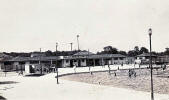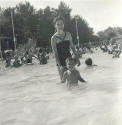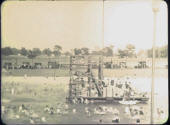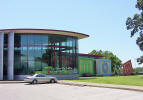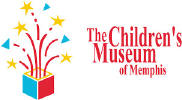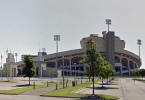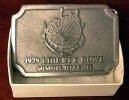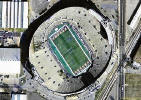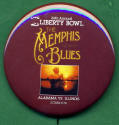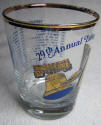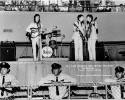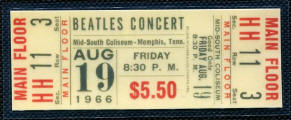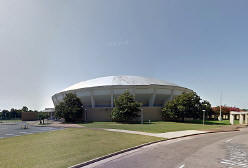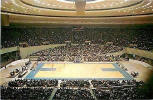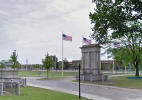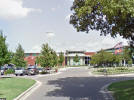|
||||||||||||||||||||||||||||||||||||||||||||||||
|
|
||||||||||||||||||||||||||||||||||||||||||||||||
|
|
||||||||||||||||||||||||||||||||||||||||||||||||
|
Thanks to the Memphis Public Library and the University of Memphis Library for many of the photos on this page |
||||||||||||||||||||||||||||||||||||||||||||||||
|
|
||||||||||||||||||||||||||||||||||||||||||||||||
|
||||||||||||||||||||||||||||||||||||||||||||||||
|
||||||||||||||||||||||||||||||||||||||||||||||||
|
|
||||||||||||||||||||||||||||||||||||||||||||||||
| Fairgrounds Park | ||||||||||||||||||||||||||||||||||||||||||||||||
|
The city of Memphis purchased the 168 acres of land in 1897 where Montgomery Park is located. Since the Shelby Country Fair has been staging their fairs on this land, the city called the acerage "The Fairgrounds". In 1912, the city decided to use the land for a permanent fairgrounds and a city park. They bought the Montgomery Park buildings from the Jockey Club and hired architect George Kessler, who had designed the Parkways and Overton and Riverside Parks, to design the space. A little known trivia fact about the Fairgrounds: The very tall heavy-duty, chain link fence around the Fairgrounds was originally around the Pink Palace property during construction. |
||||||||||||||||||||||||||||||||||||||||||||||||
|
|
||||||||||||||||||||||||||||||||||||||||||||||||
| Fairgrounds Structures and Exhibits | ||||||||||||||||||||||||||||||||||||||||||||||||
|
SHELBY COUNTY BUILDING: If there were ever a "theme building" at the Fairgrounds it would have been the Shelby County Building which opened in 1922. The building, with it's distinctive tower and large exhibition hall, was the focal point when one drove through the East parkway Gate to the Fairgrounds. During WWII, the 2nd Army used the Shelby County Building as their headquarters. Indeed, they took over the entire Fairgrounds for the duration of the war. In 1937, that large exhibition hall was set up with cots for the 1937 flood victims. In recent years, it was no secret that Memphis had "thoughts" about demolishing the building, but it was too popular. In 2003, an early morning fire left the building a brick shell and it was declared a total loss. However, it took several tries before the tower could be pulled down. |
||||||||||||||||||||||||||||||||||||||||||||||||
|
WOMEN'S BUILDING - CREATIVE ARTS CENTER: The Women's Building has always been home to Culinary Shows, Art Work, and Quilting for over 80 years. The first Women's Building was built in 1908 and was a 2-story building. It was demolished in 1917 for a new one, which was not built until 1922. This one burned in 1944 when it was occupied by the 2nd Army. The empty shell sat vacant for years before the city rebuilt it in 1949. This is the building that still exists. |
||||||||||||||||||||||||||||||||||||||||||||||||
| OTHER BUILDINGS - It's probably safe to say that all of the buildings have now been demolished for "The Great Lawn" | ||||||||||||||||||||||||||||||||||||||||||||||||
|
Casino: Hard to believe, but Memphis used to have a grand Casino, known as "The Showplace of the South", with the largest dance floor in the city. It was built by Lynn Welcher in 1930 for $100,000 - an enormous sum in those days. There were innovative features like teak and rosewood floors mounted on felt, which gave it the perfect "bounce" for dancing. It also had an enormous lighting system, like no other, in any ballroom. All the big name entertainers and bands of the day performed here. And public dances were hosted every Friday and Saturday night. The Casino thrived for 20 years. When the big bands began fading out in the 1950s, it was sold to the Memphis Park Commission for only $12,000. The new manager started a policy of "No Alcohol" and that marked the end of the old Casino. The building was turned into a public basketball arena. The fire Marshall decided the building was a fire hazard and would cost $50,000 to bring it up to code. Of course, rather than refurbish the historical building, the city demolished it in 1963. |
||||||||||||||||||||||||||||||||||||||||||||||||
|
||||||||||||||||||||||||||||||||||||||||||||||||
|
|
||||||||||||||||||||||||||||||||||||||||||||||||
| Tri-State Fair . Mid-South Fair | ||||||||||||||||||||||||||||||||||||||||||||||||
|
Fairs have
been held continuously in Memphis for 152 years - up to 2008 when
the city wouldn't renew the lease of the Mid-South Fair. The
first fair "Shelby
County Fair"
was staged in Memphis in 1856. It ran for two days. In
1858 attendance picked up and it ran for four days. This was
the period when traditions were being started, such as harness
racing, which would continue until the 1930's. By then the
Montgomery Race Track had become a part of the fair's history.
Between 1873-1877 attendance dropped dramatically because of the
yellow fever epidemic. From 1880-1906 was a time of rebuilding
after the Civil War. In 1929 the name was changed again to the Mid-South Fair, and it was the main attraction in Memphis for many years. In addition to the traditional attractions associated with fairs, the Mid-South fair included a Carnival midway and rides, concerts, and a talent show. The fair was not only popular among people in the Memphis area, but also those in adjacent cities in Tennessee, as well as neighboring states of Mississippi and Arkansas. In 2008 when Memphis wouldn't renew the lease, the Mid-South Fair moved to northwest Mississippi. |
||||||||||||||||||||||||||||||||||||||||||||||||
|
|
||||||||||||||||||||||||||||||||||||||||||||||||
|
||||||||||||||||||||||||||||||||||||||||||||||||
|
||||||||||||||||||||||||||||||||||||||||||||||||
|
||||||||||||||||||||||||||||||||||||||||||||||||
|
||||||||||||||||||||||||||||||||||||||||||||||||
|
||||||||||||||||||||||||||||||||||||||||||||||||
|
||||||||||||||||||||||||||||||||||||||||||||||||
|
||||||||||||||||||||||||||||||||||||||||||||||||
|
|
||||||||||||||||||||||||||||||||||||||||||||||||
| Negro Tri-State Fair | ||||||||||||||||||||||||||||||||||||||||||||||||
|
African Americans had attended and participated in the Tri-State Fair well into the 1870s. Following the collapse of Reconstruction and the 1896 "separate but equal" legalized segregation, Memphis blacks and whites occupied two separate societies. In 1911, prominent African-Americans founded, organized, and ran their own fair called the "Negro Tri-State Fair". It was held at the Fairgrounds a few days after the white fair closed. This was an important event in the black community for decades. When the white fair changed its name to the Mid-South Fair in 1928, the black fair became simply the Tri-State Fair until it was discontinued in 1959. The Mid-South Fair was integrated in 1962. |
||||||||||||||||||||||||||||||||||||||||||||||||
|
|
||||||||||||||||||||||||||||||||||||||||||||||||
| Fairgrounds Amusement Park 1920-1974 | ||||||||||||||||||||||||||||||||||||||||||||||||
|
The first Fairgrounds Amusement park was built to coincide with the 1920 Mid-South Fair. It's name was "Joy Plaze" and it included two of the grandest rides of the time - the Pipin Roller Coaster and the Grand Carousel merry-go-round. The Pippin was one of the oldest existing wooden roller coasters in the U.S. It was constructed in the East End Park in Memphis in 1912, out of pine wood, by John Miller and Harry Baker. When the East End Park declined in popularity, the coaster was dismantled and rebuilt in Fairgrounds park, along with the classic Dentzel Carousel. Other classic rides in the old park were "The Whip", "The Old Mill" - a lover's lane by boat, and "Noah's Ark"- noted for an air hose that blew ladies skirts up as they walked over the air hose. |
||||||||||||||||||||||||||||||||||||||||||||||||
|
||||||||||||||||||||||||||||||||||||||||||||||||
| LibertyLand Amusement Park 1976-2005 | ||||||||||||||||||||||||||||||||||||||||||||||||
|
In late 1974, the old Amusement Park was cleared to make way for LibertyLand - that is, everything was demolished except the roller coaster, the carousel, and gate office. LibertyLand opened in 1976. The Pipin was re-named "The Zippin Pippin". The new park gradually attracted decent crowds, but it never made a great profit. It continued to add attractions. Each time a new attraction, such as "Revolution", "Tidal Wave" or "Rebellion" was added, attendance would pick up. But it was short-lived. Finally, in 2005, the park closed due to financial reasons. Afterwards there were many attempts to save the park, but none of them worked out. By 2010, all of the attractions and rides had been moved, sold, or destroyed, and the land was cleared. The area is now, what else, a parking lot known as "Tiger Lane". The Zippin Pippin was demolished and sold to Green Bay, Wisconsin. What they really bought were the rights to the name and it's history, because they built their roller coaster from scratch. The Grand Carousel is said to be "in storage" - but no one seems to know where it's stored, or what will become of it. WARNING: The Grand Carousel is a classic and famous merry-go-round with great horses, hand-carved by Dentzel. It's not far-fetched to imagine that these horses might disappear one by one, unless someone is accountable. These sculptures are very valuable and very desirable to collectors. |
||||||||||||||||||||||||||||||||||||||||||||||||
|
||||||||||||||||||||||||||||||||||||||||||||||||
|
|
||||||||||||||||||||||||||||||||||||||||||||||||
| Municipal Pool | ||||||||||||||||||||||||||||||||||||||||||||||||
|
The Municipal pool opened at the Fairgrounds in 1922. It was Memphis' largest swimming pool - a huge, oval pool, surrounded by sand beaches. On the west side was a low building that housed showers and changing rooms. Across the front was a big sign, warning all swimmers "ALL OUT WHEN BELL RINGS." When the pool opened in 1922, the Shelby Country Baptist Association objected to men and women being allowed to swim together and called it a "veritable hellhole". But generations of Memphians learned to swim at the old Fairgrounds "hellhole". In 1947, the original Fairgrounds Municipal Pool was filled in and there are scanty records that a new pool was built in the same year. But today there's not a trace of either pool and we have not been able to find a date when the second pool was demolished.* |
||||||||||||||||||||||||||||||||||||||||||||||||
|
|
||||||||||||||||||||||||||||||||||||||||||||||||
|
*Email: "My father seem to recall them digging the new pool in the early 1950's. Historical aerials show that it survived until sometime after 1997. In 2006 aerials there was no trace that it existed. Hope that helps". ... Alan Cofer, February 26, 2022 |
||||||||||||||||||||||||||||||||||||||||||||||||
|
|
||||||||||||||||||||||||||||||||||||||||||||||||
| Children's Museum | ||||||||||||||||||||||||||||||||||||||||||||||||
|
1990: Fairgrounds Children's Museum opens in the old National Guard Armory, which was built in 1942. The museum literally grew from a few women sitting around a kitchen table talking about a dream. Their idea took on momentum and everyone they talked to liked what they heard. Basically the museum is modeled after the Children's Museum of Boston. It creates memorable learning experiences through the joy of play in hands-on exhibits and programs. It's nice to report a success and also to report that a historic Memphis building (the Armory) has a new lease on life. And more good news: The Grand Carousel has been completely renovated and will have a new home in mid 2017 at the Children's Museum. |
||||||||||||||||||||||||||||||||||||||||||||||||
|
|
||||||||||||||||||||||||||||||||||||||||||||||||
| Fairview Junior High * | ||||||||||||||||||||||||||||||||||||||||||||||||
|
* Fairview Jr. High, the Art Deco Masterpiece, has comprehensive coverage on its own page > Click here |
||||||||||||||||||||||||||||||||||||||||||||||||
|
Fairview Junior High Opened in 1930. It was and is a beautiful Art Deco building designed by the architectural firm of Edward Lee Harrison, the principal architect being Nolan Van Powell. It's now on the National Register of Historical Places list. Architectural critics call Fairview "the architectural gem of the school system and one of the finest buildings in the whole city." The architectural details around the building are much grander than those found in the other city schools. The school name was changed to Fairview Middle School during a reorganization of the schools. With declining enrollment, the school's days might be numnbered. Recently the district replaced a lot of broken windows around the building. Perhaps that's a good sign??? It seemed to be an even better sign when they spent millions to totally renovate the grand old building. UPDATE: Well, the School District and the City Council tricked us again. They completely dropped the Historic Fairview Junior High name and renamed the school "Maxine Smith STEAM Academy". It does appear that the City Council (2015) has a "grand plan" to change all the Historic names in the city of Memphis. |
||||||||||||||||||||||||||||||||||||||||||||||||
|
|
||||||||||||||||||||||||||||||||||||||||||||||||
| Liberty Bowl | ||||||||||||||||||||||||||||||||||||||||||||||||
|
|
||||||||||||||||||||||||||||||||||||||||||||||||
|
The stadium was originally built as Memphis Memorial Stadium in 1965, as a part of the Fairgrounds. It was built partially as a way to bring the Liberty Bowl to a permanent home in Memphis. The game became such a success for Memphis that the stadium was renamed Liberty Bowl Memorial Stadium in 1976. The stadium seats 62,000 and the field had natural grass at it's inception but that was replaced with a FieldTurf in 2005. Liberty Bowl is the home field to the University of Memphis Tigers football team. In addition to sports, the Liberty Bowl has played host to major rock concerts. Naturally, this being Memphis, there's been a lot of talk about a "new stadium". This time the glaring problem is the lack of club seats - the same revenue-killer that led Memphis to shut down the Pyramid Arena and open the FedEx Forum in 2004. Liberty Bowl can be retro-fitted, but it would cost more than building a brand new venue from scratch. Now what do you suppose will happen? |
||||||||||||||||||||||||||||||||||||||||||||||||
|
|
||||||||||||||||||||||||||||||||||||||||||||||||
|
|
||||||||||||||||||||||||||||||||||||||||||||||||
| Mid-South Coliseum | ||||||||||||||||||||||||||||||||||||||||||||||||
|
The Mid-South Coliseum was a multi-purpose arena that seated 10,085 people. It opened in 1964 and the first act was The Ringling Brothers Circus. Since then it served as the city's secondary concert and sporting venue and was once the crown jewel of arenas in Memphis. It was one of the few stops on The Beatles final American tour. Elvis Presley also performed here as well as many other famous performers. In addition to concerts, the coliseum was the home base of the United States Wrestling Association, the home of the Memphis Wings Hockey Team, and the home to three American Basketball Association teams. The facility was closed and moth-balled in 2006, because it failed to meet standards for access by the handicapped. |
||||||||||||||||||||||||||||||||||||||||||||||||
|
|
||||||||||||||||||||||||||||||||||||||||||||||||
|
||||||||||||||||||||||||||||||||||||||||||||||||
|
|
||||||||||||||||||||||||||||||||||||||||||||||||
|
Tiger Lane When the major part of the old Fairgrounds were demolished in 2010, a section from East Parkway to the Liberty Bowl entrance was redesigned and named Tiger Lane. With the completion of Kroc Center to the north, most of the former Fairgrounds is , for now, public area. And Memphis gets two more bronze Markers added to the collection to tell about what used to be here. |
||||||||||||||||||||||||||||||||||||||||||||||||
|
||||||||||||||||||||||||||||||||||||||||||||||||
|
|
||||||||||||||||||||||||||||||||||||||||||||||||
| Kroc Center | ||||||||||||||||||||||||||||||||||||||||||||||||
|
In 2004, the Salvation Army received a gift in excess of $1.5 billion from the estate of Joan Kroc, wife of McDonald's Corporation founder Ray Kroc. In 2005, Memphis was selected as one of 30 cities to receive a matching gift to build a Kroc Center. Memphis wanted this facility and had no trouble raising the necessary 25 million. In 2007, the Salvation Army of Memphis purchased the land on the Fairgrounds, where the Kroc Center is being built. When finished the 104,000 square foot Kroc Center will offer a comprehensive range of continuing education, visual and performing arts, health and wellness programs, family services and indoor/outdoor recreation for youth, adults, families and senior citizens. After more than a year's delay because of engineering problems, the center opened February 2013. May 2014: The Kroc Center charges an annual Membership fee "Individual...as low as $32 a month, plus a $50 registration fee. Household...as low as $53 a month, plus a $50 registration fee." Guest passes are available for 1 day at a cost of $4 - $10. |
||||||||||||||||||||||||||||||||||||||||||||||||
|
|
||||||||||||||||||||||||||||||||||||||||||||||||
|
Credits |
||||||||||||||||||||||||||||||||||||||||||||||||
|
The Historic-Memphis website does not intentionally post copyrighted photos and material without permission or credit. On occasion a "non-credited" photo might possibly be posted because we were unable to find a name to give credit. Because of the nature of our non-commercial, non-profit, educational website, we strongly believe that these photos would be considered "Fair Use. We have certainly made no monetary gain, although those using this website for historic or Genealogy research have certainly profited. If by chance, we have posted your copyrighted photo, please contact us, and we'll remove it immediately, or we'll add your credit if that's your choice. In the past, we have found that many photographers volunteer to have their works included on these pages and we'll also do that if you contact us with a photo that fits a particular page. |
||||||||||||||||||||||||||||||||||||||||||||||||
|
The "Historic-Memphis" website would like to acknowledge and thank the following for their contributions which helped make this website possible: Memphis Public Library, Memphis University Library, Memphis Law Library, Memphis Commercial Appeal, Memphis Press Scimitar, Shelby County Register of Deeds, Memphis City Schools, Memphis Business Men's Club, Memphis Chamber of Commerce, Memphis City Park Commission, Memphis Film Commission, Carnival Memphis, Memphis Historical Railroad Page, Memphis Heritage Inc, Beale Street Historic District, Cobblestone Historic District, Memphis Historic Districts, Vance Lauderdale Family Archives, Tennessee State Archives, Library of Congress, Kemmons Wilson Family, Richard S. Brashier, Lee Askew, George Whitworth, Woody Savage and many individuals whose assistance is acknowledged on the pages of their contributions. Special thanks to Memphis Realtor, Joe Spake, for giving us carte blanche access to his outstanding collection of contemporary Memphis photos. We do not have high definition copies of the photos on these pages. If anyone wishes to secure high definition photos, you'll have to contact the photographer or the collector. (To avoid any possibility of contributing to SPAM, we do not maintain a file of email addresses for anyone who contacts us). |
||||||||||||||||||||||||||||||||||||||||||||||||
|
|
||||||||||||||||||||||||||||||||||||||||||||||||
